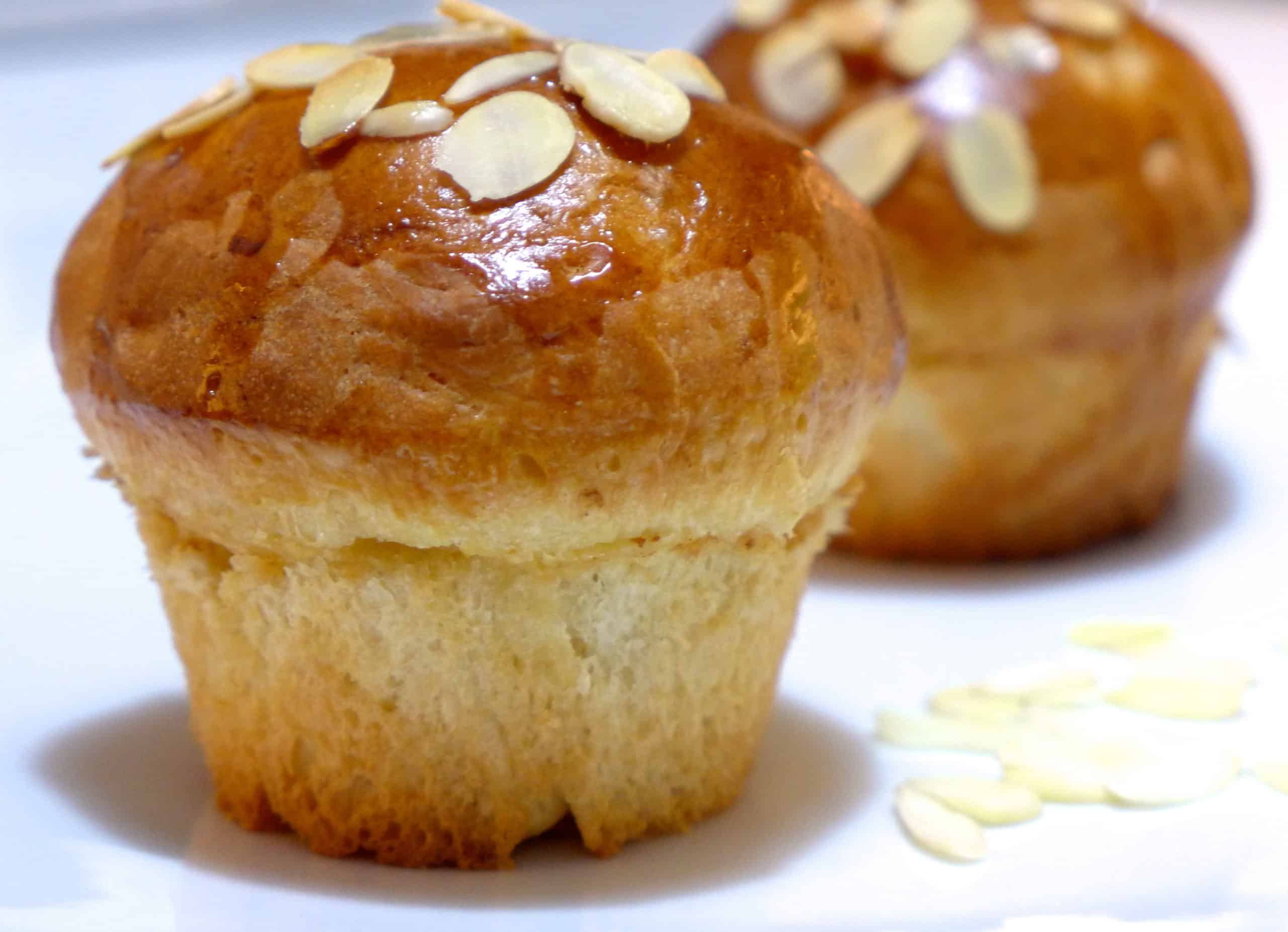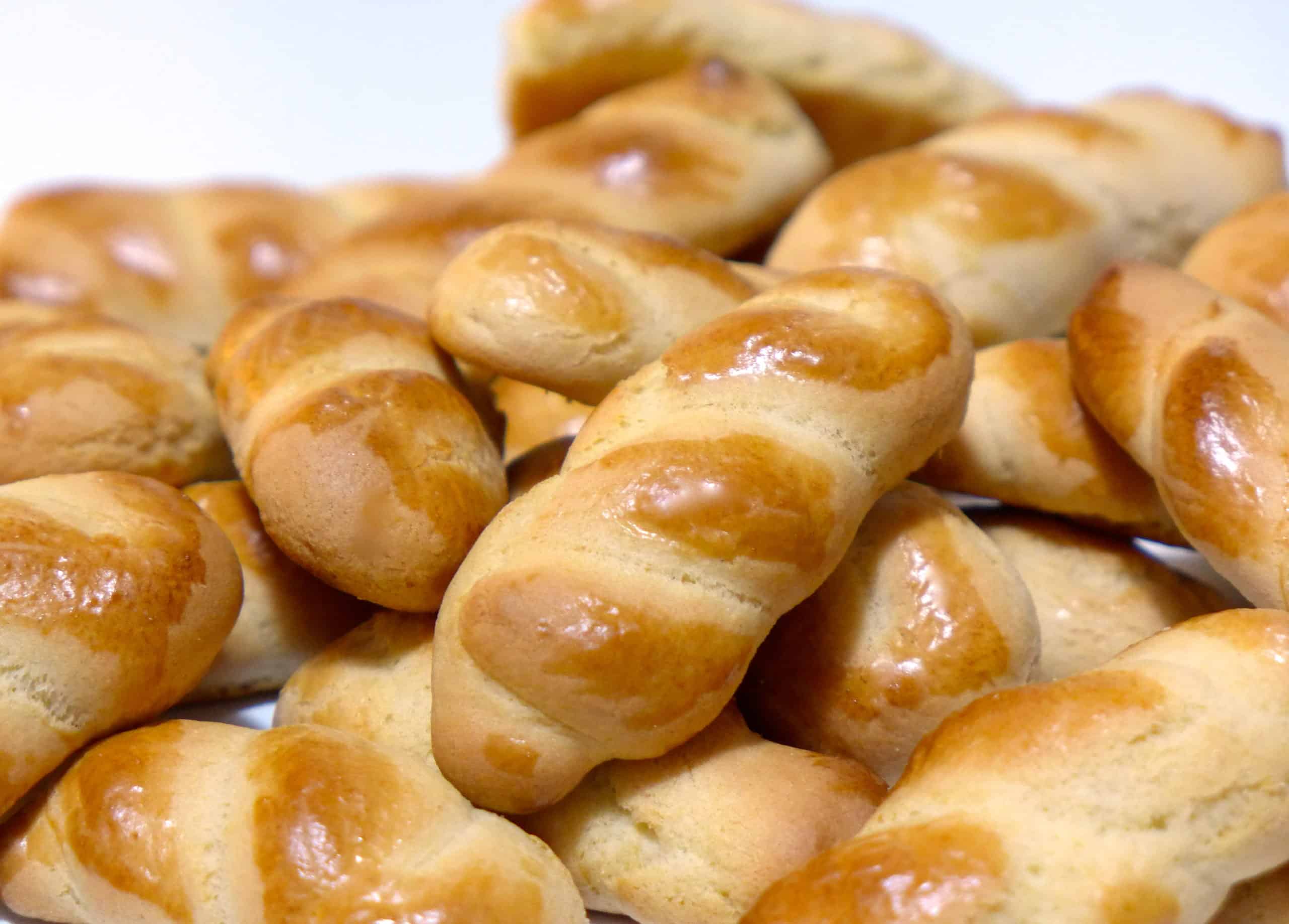Description
A traditional Greek Easter Bread (Tsoureki) recipe! Discover all the secrets behind making the fluffiest, tastiest traditional Tsoureki with this step by step, no fail recipe!
Ingredients
Scale
For the dough
- 24g dry yeast (0.85 oz.)
- 110g lukewarm water (3.9 oz.)
- 3g ground mastic (0.1 oz.) (buy online in Australia, UK, US/CA)
- 10g ground mahleb (0.35 oz.) (buy online UK, US/CA)
- 135g butter, from cow’s milk, at room temperature (4.7 oz.)
- 230g sugar (8.1 oz.)
- 150g milk, at room temperature (5.3 oz.)
- 4 medium eggs, at room temperature (200g/ 7 oz. without their shells)
- 870g strong white (bread) flour (30.6 oz.)
- zest of 1 orange
To garnish
- 1 egg and 1 tbsp water
- almond slivers
For the syrup
- 150g sugar (3.5 oz.)
- 150g water (3.5 oz.)
Instructions
- To prepare this tsoureki recipe (Greek Easter Bread), add in a bowl the lukewarm water, a pinch of sugar and yeast and stir. Wrap well with plastic wrap and set aside for about 6-7 minutes, until the yeast rises and starts bubbling. Be careful not do add hot water, as it will kill the yeast, nor cold, as it will take forever for the Greek Easter bread to rise. The water should be at the same temperature as your finger, so check it out sticking one finger in; you should feel no difference in temperature.
- Use a pestle or a blender to ground the masticha and mahlepi, along with a pinch of sugar and set aside. These aromatic spices will give Greek Easter bread its distinctive taste and amazing smell. But be careful not to add any more mastic than this tsoureki recipe calls for, as it will leave a slightly bitter taste to your Greek Easter bread.
- In a saucepan add the butter, sugar and milk. Place over very low heat and stir the mixture, until the butter has melted and the sugar has dissolved. The key is to melt the butter at very low heat, so that the temperature doesn’t ‘kill’ the yeast. Remove the pan from the stove and check the temperature. The mixture should be lukewarm – the same temperature as your finger. If it is warmer, leave to cool down for a few minutes and check again.
- Pour the butter mixture in a large bowl and whisk in the eggs. Add the yeast mixture and whisk to combine.
- In the mixer’s bowl add the flour, the ground mastic and mahlepi, orange zest and the butter-egg-yeast mixture from step 4. Using the dough hook mix at first at low speed, until the ingredients start to combine and then mix at medium-high speed for about 15 minutes, until the dough doesn’t stick on the sides of the bowl. At this point the dough should be really soft, like seen in the picture and a little sticky. (Be careful not to add any more flour than this tsoureki recipe calls for, as the dough should be really soft and not firm).
- Cover the dough with plastic wrap and place in a warm environment, until at least it doubles in size (about 3-4 hours). If the environment is cold, preheat the oven at 30C/85F, turn it off and place the bowl inside.
- Gently deflate the tsoureki dough with your hands and cut in 6 equal portions (three for each Greek Easter bread). Take one piece of the dough (do not flour the working surface!) and roll it a little with your hands. Hold with your hands from the edges and shake to stretch the dough into a rope. This technique will help the Greek Easter bread (tsoureki) form the characteristic stringy texture, as seen in the picture.
- Form the Greek Easter bread into a braid and transfer on a large baking tray layered with parchment paper. Repeat the same procedure with the second tsoureki. Let the Greek Easter bread rise for about 1 more hour at room temperature or in the oven, until it puffs up and almost doubles in size, like in the pictures.
- In a small bowl add the egg and 1 tbsp water and whisk with a fork. Brush the top of each Greek Easter bread with the egg, being careful not to deflate it, garnish with almond slivers and bake in preheated oven at 150C / 310F fan for about 30-40 minutes, until nicely browned and fluffy. If its getting too brown too quickly cover with some parchment paper and continue baking.
- Although the traditional tsoureki recipe doesn’t call for syrup, garnishing Greek Easter bread with just a little syrup, always gives a little something! So it’s up to you to decide! Prepare the syrup for the Greek Easter bread just right before you turn the tsoureki out of the oven. In a small pot add the sugar and water and bring to the boil. As soon as the sugar dissolves, remove the pot from the stove and ladle the hot syrup over the hot tsoureki.
- Let the Greek Easter bread cool down and wrap well with plastic wrap, so that it doesn’t become hard and dry. Store for up to a 5-6 days at room temperature or up to a couple of months in the freezer.
Nutrition
- Serving Size: 1 slice
- Calories: 173kcal
- Sugar: 12g
- Sodium: 13.2mg
- Fat: 2.3g
- Saturated Fat: 0.9g
- Unsaturated Fat: 1.1g
- Trans Fat: 0g
- Carbohydrates: 33.3g
- Fiber: 0.9g
- Protein: 4.9g
- Cholesterol: 29.1mg




